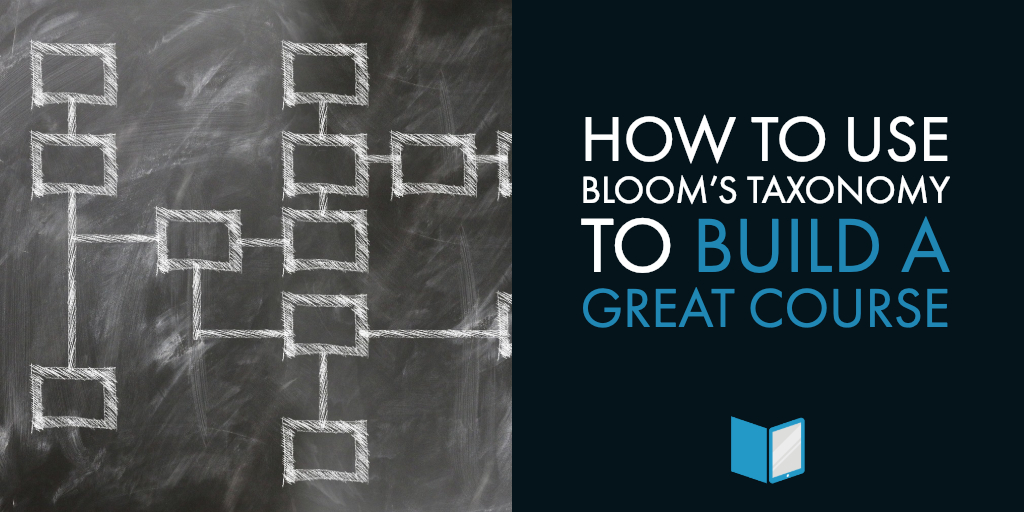Wouldn’t it be nice if a framework existed to help publishers design learning material that actually works? Great news: There is! Back in the early 50s, a committee of educators devised a set of three models to organize and classify learning objectives into levels. The levels are based on both how specific and how complicated the objectives are. This hierarchal system was dubbed “Bloom’s Taxonomy,” after the man who chaired that original group of educators. In the decades since, Bloom’s Taxonomy has been adapted and improved to keep up with our current educational needs. To this day, the taxonomy has continued to be widely used to structure curriculums, assessments, and class activities.
The Bloom’s Taxonomy Basics
Bloom’s Taxonomy covers not one but three categories of learning:
- Cognitive (knowledge-based)
- Affective (emotion-based)
- Psychomotor (action-based)
For most educational purposes, the cognitive category is the one to focus on. The framework provided has helped decades of educators design their classes to be optimally effective.
While psychologists contributed their expertise to more modern versions, one need not be a psychologist to apply the principles of the taxonomy. The overarching intention remains the same despite iterations: to organize learning into a step-by-step process that allows students to transition from no knowledge to complete comprehension as efficiently as possible. Much of this is intuitive. Would you try to have a medical student attempt a dissection before or after teaching them anatomy? The answer is obvious, but designing a complete learning course gets more complicated than that. That’s where Bloom’s Taxonomy comes in, with six main categories to organize learning objectives efficiently. There are subcategories, but the primary ones are organized as follows:
- Knowledge - recalling underlying information by memory
- Comprehension - understanding the knowledge fully, even when applied only in part or without reference to other material
- Application - applying this understanding in hypothetical and practical situations
- Analysis - going beyond comprehension to break down the knowledge and understanding the hierarchy of concepts
- Synthesis - putting these smaller pieces together to form a deeper understanding of the concepts as a whole
- Evaluation - deciding the value and purpose of the concepts learned
Putting the Taxonomy to Work
As you can see, the categories build on each other. They progress from the development of rudimentary understanding to in-depth evaluation that should allow for application of said knowledge. If you value or find purpose in something, you're much more likely to apply it. As a publisher, helping students to build this brand of full-fledged, deep understanding should be your endgame. The 2001 edition of the Taxonomy describes the cognitive processes of learners with verbs, progressing from words like recognizing, recalling, and summarizing to ones like critiquing, organizing, and producing. By designing our learning material to support the progression of these abilities, we enable students to gradually build knowledge and skills in the most efficient and psychologically optimal order.
How to Get Started
If using Bloom’s Taxonomy still seems confusing, start out by reviewing this handy chart. A simplified version of the Taxonomy, it illustrates the order of learning development every course should follow, building from the recognition of information to the ability to create original work.
The first step is always to assess student needs and establish the primary course learning objectives. Once you have the big ideas down, break them down into progressively more challenging learning elements. Be sure that assessments and assignments are aligned with each element. Providing a logical course outline enables students to develop their mastery of the material sequentially. Better yet, it establishes a “big picture” so students understand from the start what they are striving to accomplish by the end of the course. An easy way of explaining this to students is by sharing what they should be able to do at the end of each lesson.
The reason Bloom’s taxonomy works so well is that it follows the learning process from start to finish, giving students the ideal foundation for more advanced levels of study. Next time you’re designing a learning program consider studying the Taxonomy to perfect your approach. Not enough time? Just following the general hierarchy of learning objectives will improve your course structure and set the stage for better learning outcomes.
Better learning outcomes are also a major goal we help our customers achieve. Our Courseware Creator allows educators to build truly immersive and diverse learning experiences. Want to take a peek? We're happy to show you around: 





Leave a comment